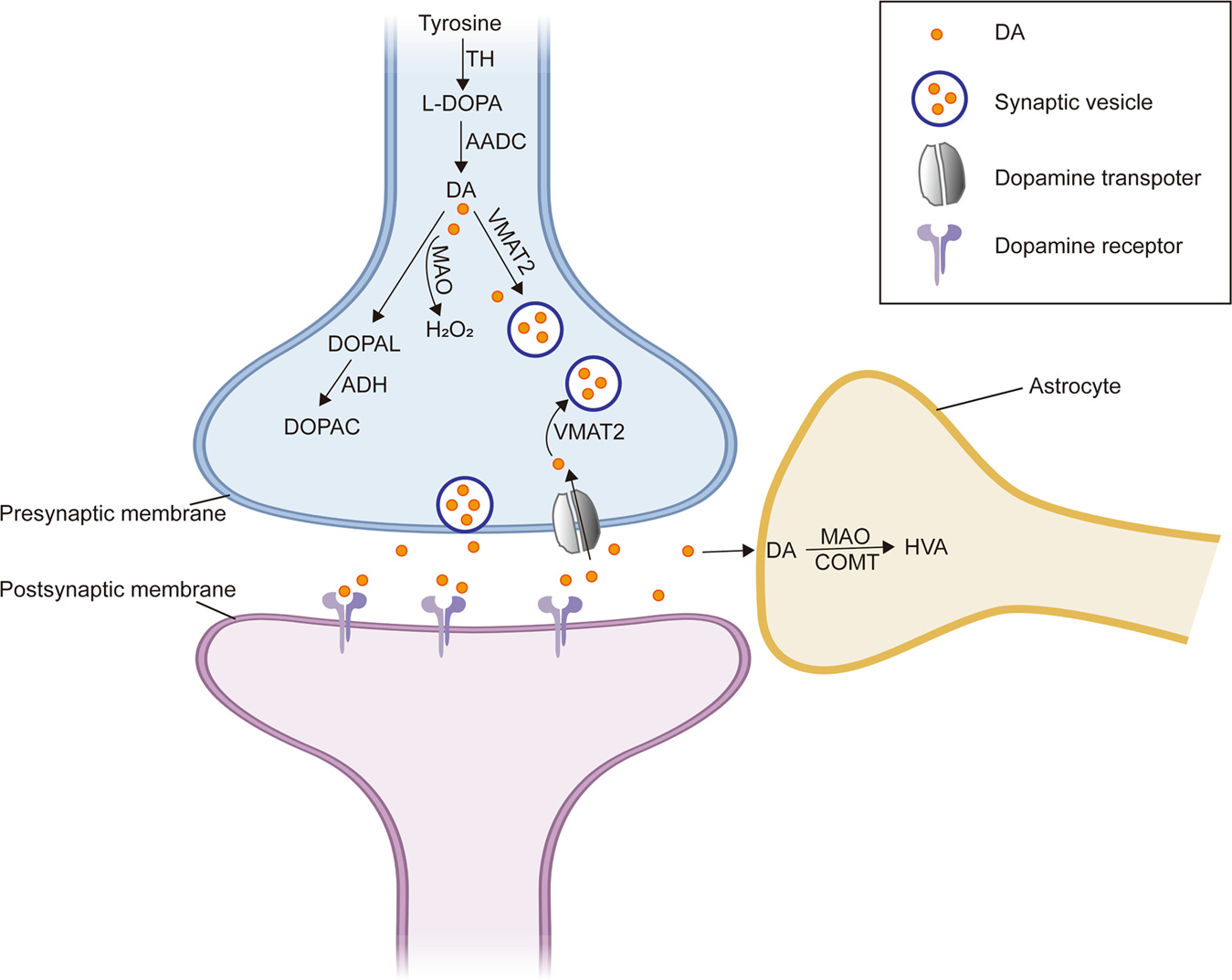Schizophrenia & Dopamine
Written by Crystal Ruizmun
Schizophrenia is a prevalent illness that affects an estimated 24 million people globally and those affected often feel disconnected from reality. It is a mental illness that affects how a person thinks and feels, to the point where it causes delusions and hallucinations. The symptoms of schizophrenia can make it difficult to participate in everyday activities, but surfacing treatments like ketamine have proved to be useful in treating schizophrenia.
The main part of schizophrenia is the influx of dopamine, which is a neurotransmitter that is involved in its pathology(2). There is an unusual amount to where these delusions and hallucinations begin. There are D(1)-receptors associated with the prefrontal cortex that are common in schizophrenia patients, causing “cognitive discrepancies”(2). These D(1)-receptors are “...expressed in the midbrain and forebrain, regulating motor behavior, reward, motivational states, and cognitive processes”(3). These receptors are essential in the productivity of the brain, and the overproduction of them causes the brain to overlord itself and work overtime.
The Dorsolateral Prefrontal Cortex(DLPFC) is in charge of controlling functions in the brain, like task switching, memory, planning, and many others. Because of the overproduction of the D(1)-receptor, causing a disturbance in the DLPFC and affects the neuron pathways, causing other brain regions to be disturbed as well, resulting in the different brain regions to begin overproducing information.
As a result of the overproduction of dopamine, it causes the brain to undergo brain fog and inattentiveness, leaving the patient to have trouble problem-solving or making decisions. Using treatments like ketamine helps absolve the amount of dopamine in the brain, returning it to more stable levels. Ketamine is a derivative that acts as an antipsychotic and has been known to effectively treat illnesses such as depression. Continuing research on ketamine and its relation to schizophrenia would result in groundbreaking discoveries to help reach schizophrenia patients better and possibly even cure them.
References
[1]Schizophrenia. (n.d.-b). National Institute of Mental Health (NIMH). [NIH] [2]Brisch, R., Saniotis, A., Wolf, R., Bielau, H., Bernstein, H. G., Steiner, J., Bogerts, B., Braun, K., Jankowski, Z., Kumaratilake, J., Henneberg, M., & Gos, T. (2014). The role of dopamine in schizophrenia from a neurobiological and evolutionary perspective: old fashioned, but still in vogue. Frontiers in psychiatry, 5, 47. Dopamine
[3] Jones-Tabah, J., Mohammad, H., Paulus, E. G., Clarke, P. B. S., & Hébert, T. E. (2022). The signaling and pharmacology of the dopamine D1 receptor. Frontiers in Cellular Neuroscience, 15. Dopamine D1 Receptor
[4] Hertrich, I., Dietrich, S., Blum, C., & Ackermann, H. (2021). The Role of the Dorsolateral Prefrontal Cortex for Speech and Language Processing. Frontiers in human neuroscience, 15, 645209. DLPFC
[5]Beck, K., Hindley, G., Borgan, F., Ginestet, C., McCutcheon, R., Brugger, S., Driesen, N., Ranganathan, M., D'Souza, D. C., Taylor, M., Krystal, J. H., & Howes, O. D. (2020). Association of Ketamine With Psychiatric Symptoms and Implications for Its Therapeutic Use and for Understanding Schizophrenia: A Systematic Review and Meta-analysis. JAMA network open, 3(5), e204693. https://doi.org/10.1001/jamanetworkopen.2020.4693
[6]https://touchneurology.com/?p=56267
Written by Crystal Ruizmun from MEDILOQUY


